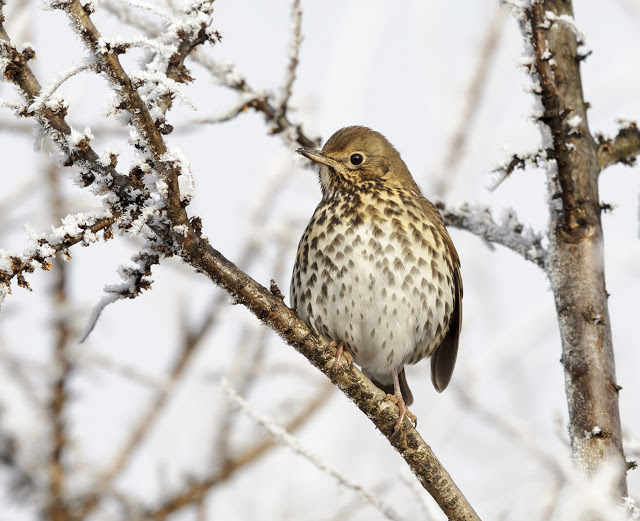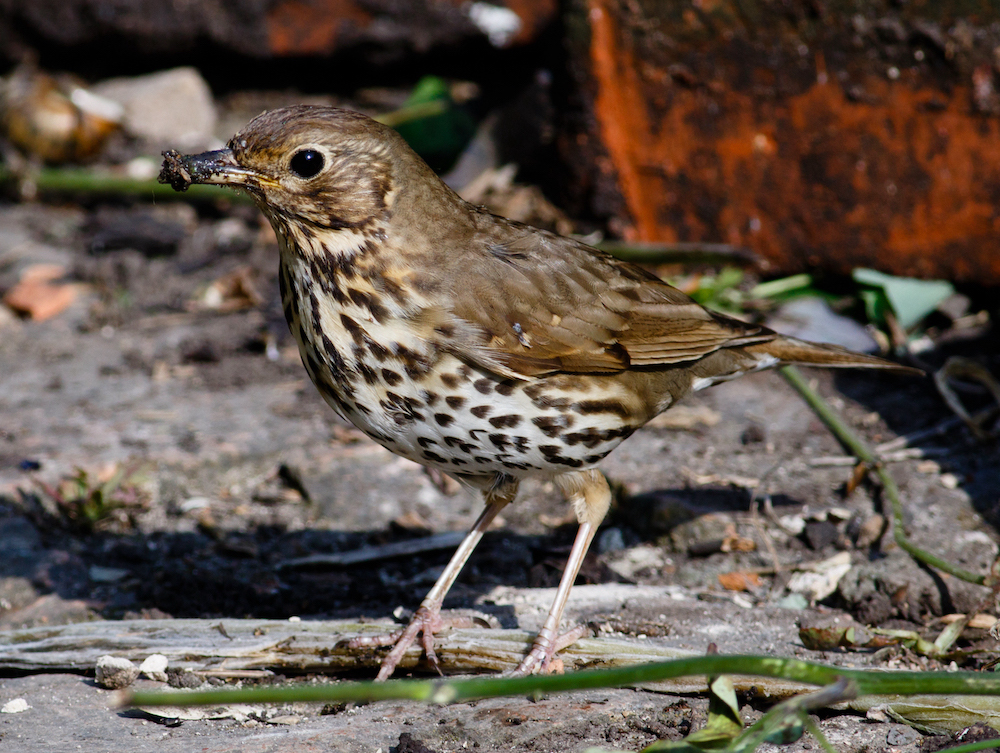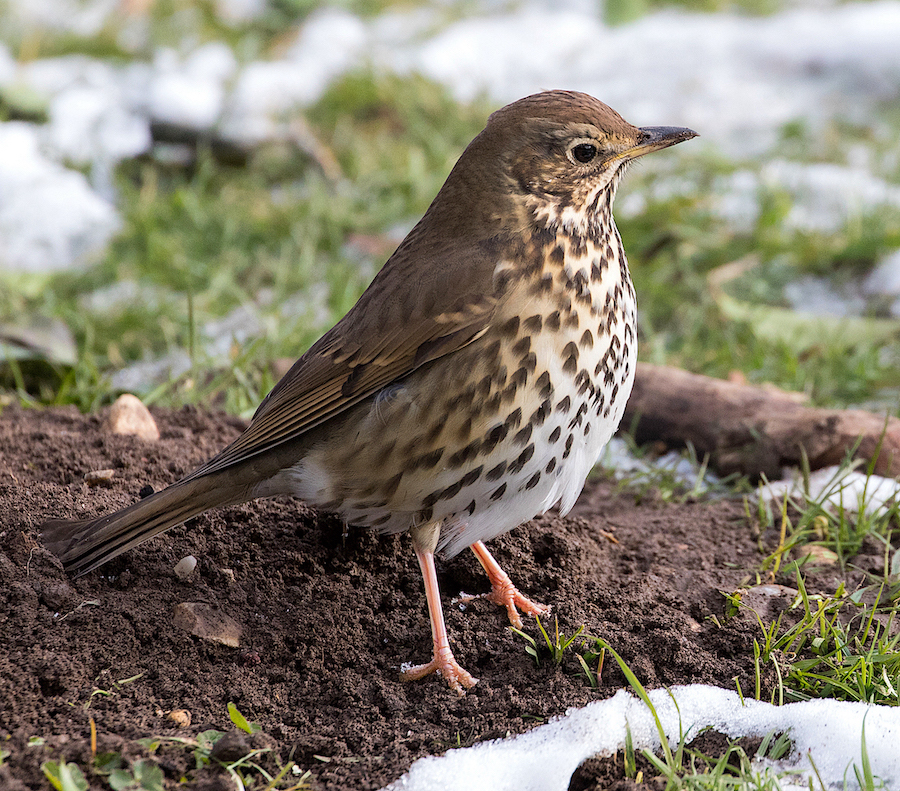Song Thrush Turdus philomenos
British form ‘clarkei’ a very common resident. Nominate continental form a common passage migrant and winter visitor.



The Song Thrush is one of our commonest songsters and is found pretty much everywhere in Lincolnshire. The Atlas estimated the population in the 1980s at around 38,000 pairs but noted there was a steady decline through the late 1980s into the 1990s followed by a slight recovery in the late 1990s. In general the data shows that Song Thrushes experience ups and downs, but it generally does well and has shown a long-term increase since 1994. Each autumn there is an influx of continental birds best observed at coastal sites and usually in the first half of October. It is difficult to estimate the numbers of birds passing through in the dense Sea Buckthorn Hippophae rhamnoides of coastal dunes, but peak day counts give a good indication and the largest usually come from Gibraltar Point. LBR reports indicate in the five years to 2018 the peak day counts ranged from 117 on October 11th, 2018 to 295 on October 14th, 2014 with an average of around 170. The actual numbers of birds involved along the coast runs into many thousands. Some of these stay to winter and incoming migrant thrushes with their cold grey tones can be found in field hedges throughout the county in the winter months.
(Account as per new Birds of Lincolnshire (2021), included December 2022)
